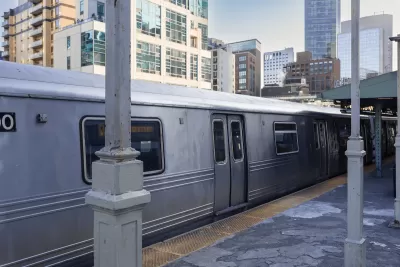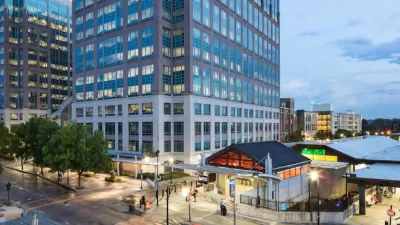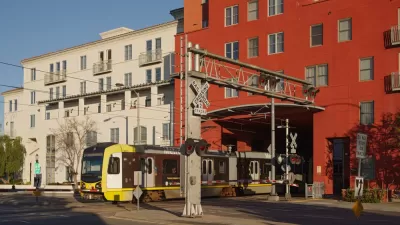Tying transit and land acquisition funding together could help produce more housing near transit hubs.

New research from the Urban Institute’s Yonah Freemark reveals that only a small percentage of housing development in the United States is located near transit. As Freemark explains, “I found that, in urban areas, tracts with transit stations added about 2 million housing units between 2000 and 2019. But those without stations added 17.6 million units. Too many new housing units are being added far from stations, increasing transportation costs for millions of Americans.”
Freemark adds, “One explanation for inadequate housing near transit is that transit agencies do not prioritize transit-adjacent housing development and lack a dedicated source of funding to acquire land for such projects. To help enable transit-oriented development, a federal land acquisition program that supplements transportation infrastructure grants could help transit agencies and local governments in acquiring properties to encourage housing development.”
Freemark recommends tying transit and land acquisition grants together via a “dedicated land acquisition program. This program’s funds could be used specifically to buy vacant or underused land, such as surface parking lots or one-story strip malls primed for redevelopment.” Cities and transit agencies could then use public-private partnerships with developers or social housing programs to build more affordable housing near transportation options.
FULL STORY: Spurring Housing Development Near Transit through Federally Funded Land Acquisition

Alabama: Trump Terminates Settlements for Black Communities Harmed By Raw Sewage
Trump deemed the landmark civil rights agreement “illegal DEI and environmental justice policy.”

Study: Maui’s Plan to Convert Vacation Rentals to Long-Term Housing Could Cause Nearly $1 Billion Economic Loss
The plan would reduce visitor accommodation by 25% resulting in 1,900 jobs lost.

Why Should We Subsidize Public Transportation?
Many public transit agencies face financial stress due to rising costs, declining fare revenue, and declining subsidies. Transit advocates must provide a strong business case for increasing public transit funding.

Paris Bike Boom Leads to Steep Drop in Air Pollution
The French city’s air quality has improved dramatically in the past 20 years, coinciding with a growth in cycling.

Why Housing Costs More to Build in California Than in Texas
Hard costs like labor and materials combined with ‘soft’ costs such as permitting make building in the San Francisco Bay Area almost three times as costly as in Texas cities.

San Diego County Sees a Rise in Urban Coyotes
San Diego County experiences a rise in urban coyotes, as sightings become prevalent throughout its urban neighbourhoods and surrounding areas.
Urban Design for Planners 1: Software Tools
This six-course series explores essential urban design concepts using open source software and equips planners with the tools they need to participate fully in the urban design process.
Planning for Universal Design
Learn the tools for implementing Universal Design in planning regulations.
Smith Gee Studio
Alamo Area Metropolitan Planning Organization
City of Santa Clarita
Institute for Housing and Urban Development Studies (IHS)
City of Grandview
Harvard GSD Executive Education
Toledo-Lucas County Plan Commissions
Salt Lake City
NYU Wagner Graduate School of Public Service





























